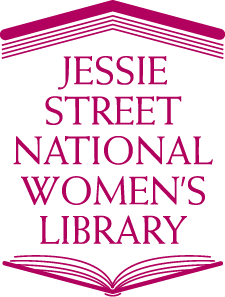1890-1965
Tapestry series no. 36
Contributed by Betty Jarvis
Though Janie Pearce was an Australian by adoption, and though she worked most of her working life out of Australia as a teaching missionary in the Papuan Islands, she called herself an Australian. She came back to Australia for most of her furloughs (every 3 or 4 years) and spent time with her parents and family in country Victoria. However in the short time of these six-month furloughs, she was expected to take speaking engagements, particularly in the Eastern states as she came and went back. With her very good speaking voice and manners and her interesting subject matter — she was a very acceptable speaker.
She was born in England in June 1890 to a coal mining/farming family living in Cornwell. The family of 10 children migrated to Australia in 1910 and lived in the tent town of Powlett River (Wonthaggi) at first while Samuel Pearce worked as a coal miner. Under a government scheme of closer settlement, the family moved to a farm at Boisdale (via Maffra).
As the oldest girl, she had to help with the large family and often told us how, at 12 years old, she made bread while her mother was ill. The family was of Methodist background in (about) 1914 she offered as a missionary with the Methodist Church. She did training at St Hilda’s Anglican college (Melbourne). We have a group photo taken at this time of her among other students.
One of her younger sisters married and they had a family of seven (three boys and four girls). I write as the oldest of four sisters and her niece, born 1928. I began to get to know her, when she was sent home in 1942, when all missionary women were evacuated before the advance of the Japanese. I can remember her grief when she heard of the sinking of a Red Cross ship that was bringing home 40 missionary men being evacuated. She had worked with many of them. She came back to the family farm at Boisdale and I can remember some R.A.A.F men coming to interview her, to get relevant information to help in the war effort in and around Dobu,.Goodenough, Samari islands off the tip of Papua.
She had to earn a living while in Australia during the war and she was given a place on the staff on Briagolong State School, 12 miles from Boisdale. With petrol rationing she drove a horse and jinker. Each Monday after being home for the weekend the horse was harnessed and she’d get in and say, “Point me in the right direction”. The children would stop the horse for her at the other end. She boarded during the week at another farmhouse 2 miles out of Briagolong. In a recently produced booklet for a Briagolong school reunion, some ex-students of Janie Pearce (1942 -46) wrote of her helpful discipline, clear teaching methods and her telling them about Papuan children. They said their easy recall of “times tables” was excellent and they remembered her as a gentle lady who helped them think of a wider world.
After World War II ended, Janie Pearce went back to Papua for 15 years. (I still have a woven palm mat made to welcome her home to Papua.) Janie retired to Maffra and shared in the church community life in preaching and Sunday School teaching. She died after a brief last illness, and she is buried among her family members at Maffra cemetery.
About 30 years after her death, an amazing glimpse of her influence was given to my cousin. Miss F.A. Pearce and me. We were attending a specialist doctor in Melbourne. He had a woman student Papuan doctor with him when he asked Miss Pearce to come in, she recognised the name and asked were we related to a Miss Pearce she had heard about in Papua.
A remarkable Australian.

